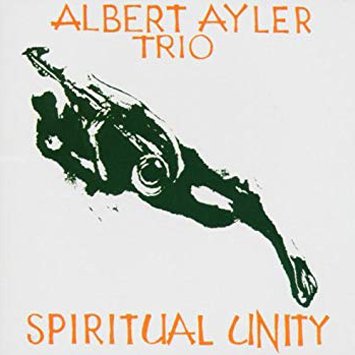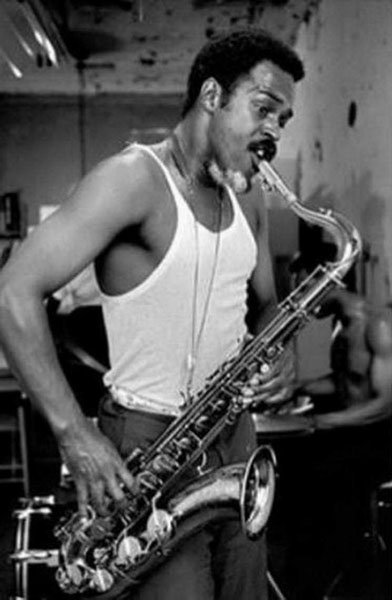Albert Ayler (tenor sax), Gary Peacock (bass) and Sunny Murray (percus-sion). From the album Spiritual Unity (1965).
This album pushed Albert Ayler to the forefront of the jazz avant-garde and attracted international attention. It’s the project with the greatest group cohesion initiated to date by the composer. All members listen to the subtler details of each other’s performance, encouraging and responding when appropriate. The trio hold nothing back, playing as if their very lives depended on it. Ayler showed that his drastic reworking of the jazz saxophone vocabulary was self-sufficient and didn’t need other wind instruments to support his fierce attack. This included explorations of the harmonics and evocations of the string sound in the upper register.

Album cover
His yellings, shrieks, laments and the broadest vibrato ever heard on a jazz album were sound expressions of an intense desire for transcendence. The ideas that flow freely from Gary Peacock’s double bass and the rhythms of drummer Sunny Murray are essential in removing Ayler’s interpretative limitations. With cantable melodies based on traditional folk songs and standard scales, Ayler used the simplest musical expressions and infused them with a powerful visceral power.

Albert Ayler
Ayler makes a short introduction and then Peacock and Murray join in to expose the theme, which seems like a children’s song. However, as soon as it ends, any sense of harmony, melody or rhythm disappear and each member of the trio plays freely. Although it’s a collective improvisation, Ayler stands out for producing unusual sounds with his saxophone. Next, Peacock makes a solo with a spontaneous melodic line, but coherent within its peculiarity until Ayler returns to reexpose the theme.

